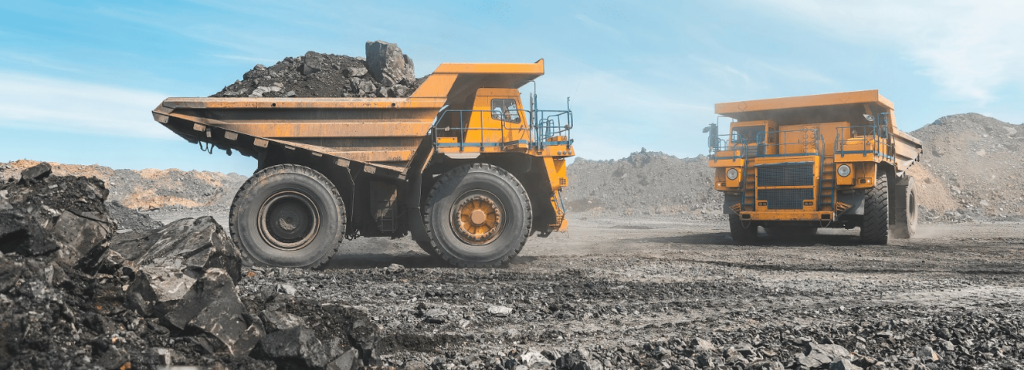Navigating the Mining Industry in Ontario: Challenges and Opportunities

The mining sector is an essential contributor to the economy of Ontario, and according to Natural Resources Canada, it accounted for about CAD $10.8 billion of the province’s GDP in 2022. Queenston, a historic mining region within Ontario, has played a pivotal role in the growth of the mining industry, while the Toronto Stock Exchange (TSX) has emerged as a significant player in the mining market, hosting numerous mining companies.
Automation is revolutionizing mining by streamlining operations, reducing risks, and enhancing productivity. The benefits of AI and other advanced technologies are being felt not just in mining but across various sectors, including online casinos. To understand how these innovations are changing industries, check out this thoughtful examination of automation’s broader impact that provides essential insights.
History of Mining in Ontario
Ontario has a long history of mining exploration and development, dating back to the 19th century. The discovery of gold in the province in the 1800s led to a gold rush, and many mining communities sprang up around the province. Mining played a significant role in the province’s economy and helped to shape the province’s history.
Queenston and the surrounding region have a particularly significant mining history. The discovery of gold in the area in the early 1800s led to the establishment of several mining camps in the region. The Queenston mining district was a major producer of gold, and the area attracted many prospectors and mining companies.
Mining has had a significant impact on the local economy and environment. The development of mining infrastructure and the creation of mining jobs have helped to support many communities around the province. However, mining activities have also had negative environmental impacts, such as soil and water contamination and habitat destruction.
Current State of Mining in Ontario
The province of Ontario is among the top mining jurisdictions in North America, and it possesses abundant mineral resources, such as gold, silver, nickel, copper, zinc, and diamonds. This industry is a significant contributor to Ontario’s economy, providing job opportunities and generating income for the province. The mining sector contributed CAD $10.8 billion to Ontario’s GDP in 2021, and it directly employed over 74,000 people in 2022. Furthermore, the sector’s activities supported an additional 30,000 jobs in other industries.
Ontario’s mining industry is diverse, with different minerals extracted for various uses. Gold is one of the most significant minerals produced in the province, accounting for 56% of Ontario’s mineral production by value in 2022. Meanwhile, nickel, copper, and zinc are also essential minerals produced in the province. These minerals are used in various industries such as construction, transportation, and electronics. For example, nickel is used in the production of stainless steel and batteries, while copper is used in the production of electrical wires and electronics.
The mining industry also has a substantial economic impact on the province. In 2022, the industry’s gross value added to Ontario’s economy was approximately CAD $12.5 billion, and mining companies operating in Ontario contributed CAD $1.3 billion in taxes and royalties to the provincial government.
TSX Mining Market
The Toronto Stock Exchange (TSX) is a significant player in the mining industry, with many mining companies listed on the exchange. The TSX is one of the world’s leading mining exchanges, and mining companies listed on the exchange have access to a global investor base.
Current trends in the TSX mining market include a focus on sustainable mining practices and increasing investment in battery metals. The demand for battery metals such as lithium, cobalt, and nickel is increasing due to the growth of the electric vehicle market.
Several key players in the TSX mining market have performed well in recent years. Barrick Gold Corporation, the world’s largest gold mining company, has a market capitalization of CAD $54.3 billion as of April 2024. Agnico Eagle Mines Limited, a Canadian gold mining company, has a market capitalization of CAD $21.4 billion. First Quantum Minerals Ltd, a Canadian mining and metals company, has a market capitalization of CAD $18.2 billion.
| Key Players in the TSX Mining Market | Market Capitalization (CAD $B) |
| Barrick Gold Corporation | 54.3 |
| Teck Resources Limited | 16.5 |
| Franco-Nevada Corporation | 16.3 |
Challenges and Opportunities for Mining Investors
Mining investors face various risks and challenges, including regulatory and environmental risks. The Ontario government has implemented policies and regulations to ensure that mining activities are conducted in a sustainable and responsible manner. However, these regulations can also pose challenges for mining investors, such as delays in the permitting process.
Emerging technologies and innovations in the mining industry provide opportunities for investors to mitigate risks and maximize returns. For example, the use of automation and digital technologies in mining operations can improve safety and productivity while reducing costs.
Case Study: Mining in Queenston
Queenston has a rich history of gold mining, with several active mining projects in the region today. The local geology and mineral resources present both challenges and opportunities for mining investors in Queenston. In terms of geology, the Queenston area is part of the Abitibi Greenstone belt, which is known for its significant gold deposits. The region also contains deposits of other minerals such as copper, zinc, and silver. The presence of these minerals presents opportunities for mining investors, but the geology of the area can also pose challenges, such as the deep underground deposits and complex mineralization.
One of the active mining projects in Queenston is the Upper Beaver project, which is a joint venture between IAMGOLD Corporation and Sumitomo Metal Mining Co. Ltd. The Upper Beaver project is located approximately 50 kilometres east of Timmins, Ontario, and is part of the larger Côté Gold project. The Côté Gold project is expected to produce an average of 367,000 ounces of gold per year over its estimated 18-year mine life.
Challenges for mining investors in Queenston include regulatory compliance and the need to address environmental concerns. The Ontario government has implemented regulations and policies to ensure that mining activities in the province are conducted sustainably and responsibly. For example, the Ontario Mining Act requires mining companies to have a closure plan in place before commencing operations. This plan must outline how the company intends to rehabilitate the land once mining operations are complete.
However, the need to comply with regulations and address environmental concerns can also pose challenges for mining investors. For example, delays in the permitting process can delay mining projects and increase costs. Mining companies must also consider the potential impact of their operations on local communities and the environment.
In terms of opportunities, emerging technologies such as artificial intelligence, automation, and digitization can help mining companies to operate more efficiently and safely. For example, the use of autonomous vehicles and drones in mining operations can reduce the need for human labour in potentially hazardous environments. Digital technologies such as cloud computing and data analytics can also help mining companies to optimize their operations and improve productivity.
Summary and Implications
Ontario has a rich history of mining exploration and development, and the mining industry is a crucial contributor to the province’s economy. Queenston has a significant mining history and is home to several active mining projects today.
The TSX is a significant player in the mining market, with many mining companies listed on the exchange. The demand for battery metals and a focus on sustainable mining practices are current trends in the TSX mining market. Mining investors face various risks and challenges, including regulatory and environmental risks. However, emerging technologies and innovations in the mining industry provide opportunities for investors to mitigate risks and maximize returns.
For mining investors in Ontario and beyond, it is important to carefully consider the risks and challenges associated with mining investments. It is also important to ensure that mining activities are conducted in a sustainable and responsible manner, taking into account the potential impact on the environment and local communities.
Future research on this topic could explore the impact of emerging technologies and innovations on the mining industry, as well as the potential environmental and social impacts of mining activities. Additionally, the research could be conducted on the role of mining in the transition to a low-carbon economy and the potential opportunities and challenges for mining investors in this context.
